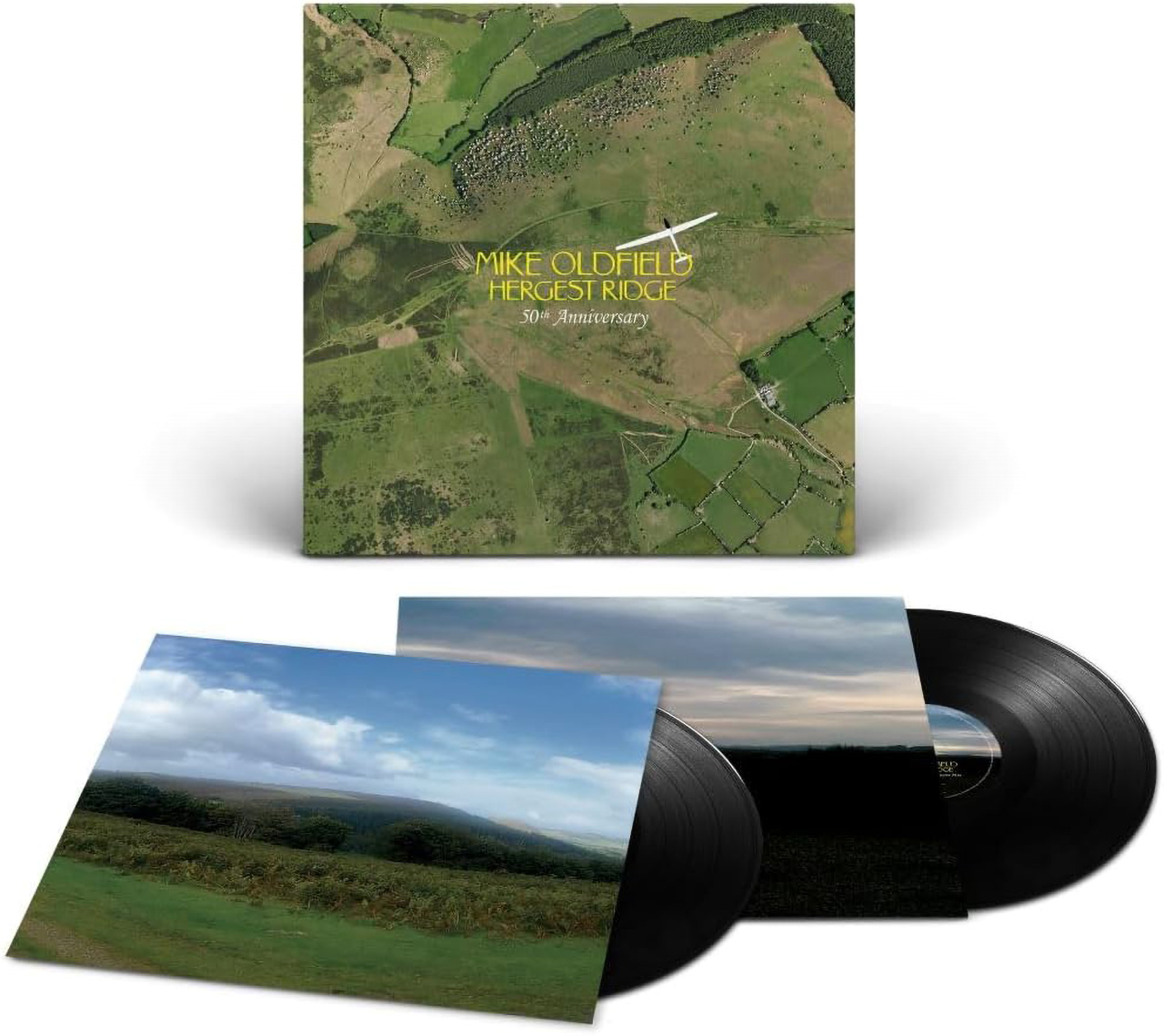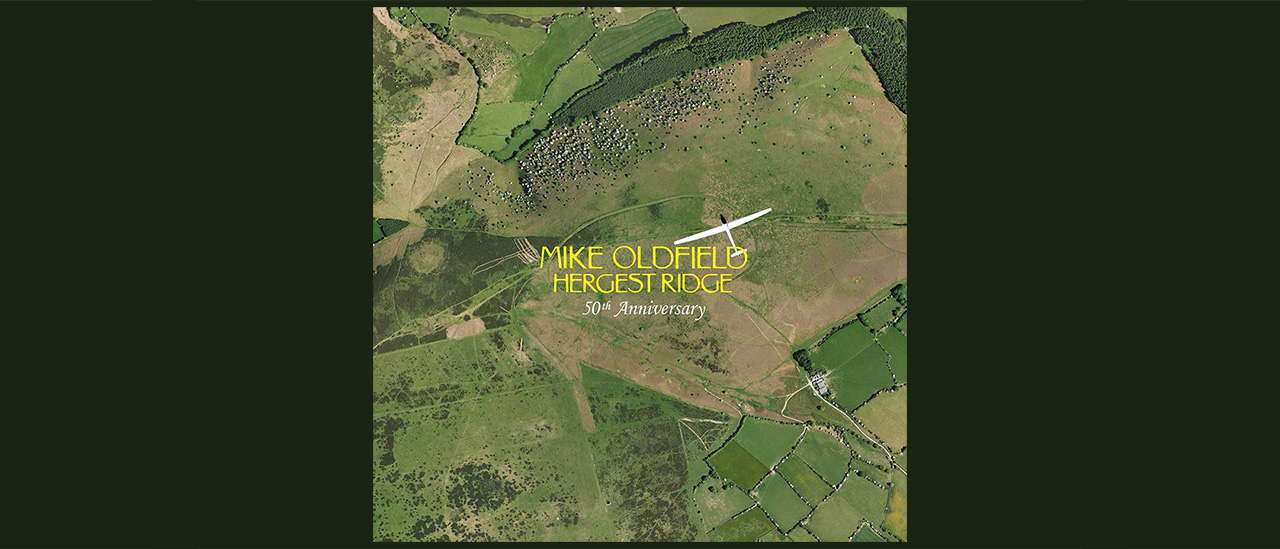You can trust Louder
For some artists, returning to a part of their back catalogue can be uncomfortable. All they remember are the circumstances in which the music was born, the difficulties in writing it, or shortcomings in its performance – a gap between the artistic tangle in their head versus the unforgiving reality of the finished item.
For Mike Oldfield, Hergest Ridge will, to some extent, always be a reminder of the crushing pressure to produce the follow-up to Tubular Bells, while still coming to terms with the stresses and strains of sudden fame.
Expected to face the demands of the music press while dealing with family issues, a chronic lack of self-confidence and anxiety attacks, it’s little wonder Oldfield has expressed mixed feelings about an album he started when he was barely 21 years old and creatively running on fumes.
As he observes in the short note accompanying the 50th-anniversary edition: “I retreated, physically and mentally, out to Kington on the English-Welsh border, and made music that reflected the simplicity and beauty of the landscape.”
And what a reflection Oldfield captures. In the tremulous opening chord, he conjures shifting air currents, the haunting stillness of reverie beneath a moving sky, wind in the trees, the green haze of gently rolling hills, the echoing high register of birdsong.
Hovering between the land and the air, the melodies that trickle through the two pieces that make up Hergest Ridge feel both ancient and contemporary. The intertwining themes draw upon folkloric loam or rake through once-whistled tunes, to be scattered from the fields into the wind. In representing the British landscape, the work groups him – however inadvertently or unconsciously – with a small but significant breed of 20th-century composers. What might have begun as a response to a particular locale becomes universal, ineffable, when transferred to the beholder’s ear.
And should that seem a touch too fanciful, listen to Ralph Vaughan Williams, Gerald Finzi, Peter Warlock and others belonging to what’s sometimes referred to as the English pastoral tradition. They never used Farfisa organs, electric guitars, multitracking, or enjoyed the benefits of a 24-track tape recorder; but they’d surely recognise the evocations and emotions Oldfield taps into.
Sign up below to get the latest from Prog, plus exclusive special offers, direct to your inbox!
The range of the new editions spoils Oldfield fans with multiple choices. In addition to the two-LP version featuring half-speed masters of the 1974 mix and the 2010 mixes, the Blu-ray audio brings together new Atmos and stereo mixes by David Kosten, Oldfield’s 5.1 and stereo mix from 2010, the 1976 boxed quad mix, 1974’s original stereo and the album demos (which also appeared on the 2010 deluxe edition).
Kosten’s work on all the above formats is exemplary, but his Atmos mix has the edge. Enveloping the listener deep in a rich textural infrastructure, he accesses sonic depths and dynamics in a way that the limitations of the original vinyl never could, subtly conferring an extra gravitas upon this gleaming collection of winsome melodies.
In its delicate, meandering way, it illustrates Oldfield’s quiet heroism in finding his way through a creative gap
After Part One’s pellucid introduction when the trumpets sound, “the listening shores rebound” just like Henry Purcell said they would. It’s stirring stuff. David Bedford’s choral arrangement radiates across the spatial field like the warming sun, making this heavenly music indeed.
Part Two’s frenetic, distorted hurly-burly at the halfway mark builds with a claustrophobic intensity that claws at the ears, making the abrupt transition all the more impactful. Once again, Bedford’s fervent scoring for the string section leans into a verdant romanticism that avoids cloying nostalgia, moving toward a graceful conclusion.

Less guitar-centric than Oldfield’s 2010 mix, Kosten’s perspectives are akin to hearing something different about somewhere deeply familiar. The value in having the viewpoint of an informed visitor with an objective eye and ear is that we learn something new.
Hergest Ridge has never sounded more beautiful than it does here. Neither rock nor classical, it chronicles a story of escape and refuge. It also evokes the redeeming power of optimism and, in its delicate, meandering way, illustrates Oldfield’s quiet heroism in finding his way through a creative gap.
This music might always be overshadowed by the wide cultural resonances of its predecessor and what came next – but, as these new editions capably demonstrate, its brooding power and continuing magic should never be underestimated.
Hergest Ridge: 50th Anniversary is on sale now via Universal.
Sid's feature articles and reviews have appeared in numerous publications including Prog, Classic Rock, Record Collector, Q, Mojo and Uncut. A full-time freelance writer with hundreds of sleevenotes and essays for both indie and major record labels to his credit, his book, In The Court Of King Crimson, an acclaimed biography of King Crimson, was substantially revised and expanded in 2019 to coincide with the band’s 50th Anniversary. Alongside appearances on radio and TV, he has lectured on jazz and progressive music in the UK and Europe.
A resident of Whitley Bay in north-east England, he spends far too much time posting photographs of LPs he's listening to on Twitter and Facebook.
You must confirm your public display name before commenting
Please logout and then login again, you will then be prompted to enter your display name.



